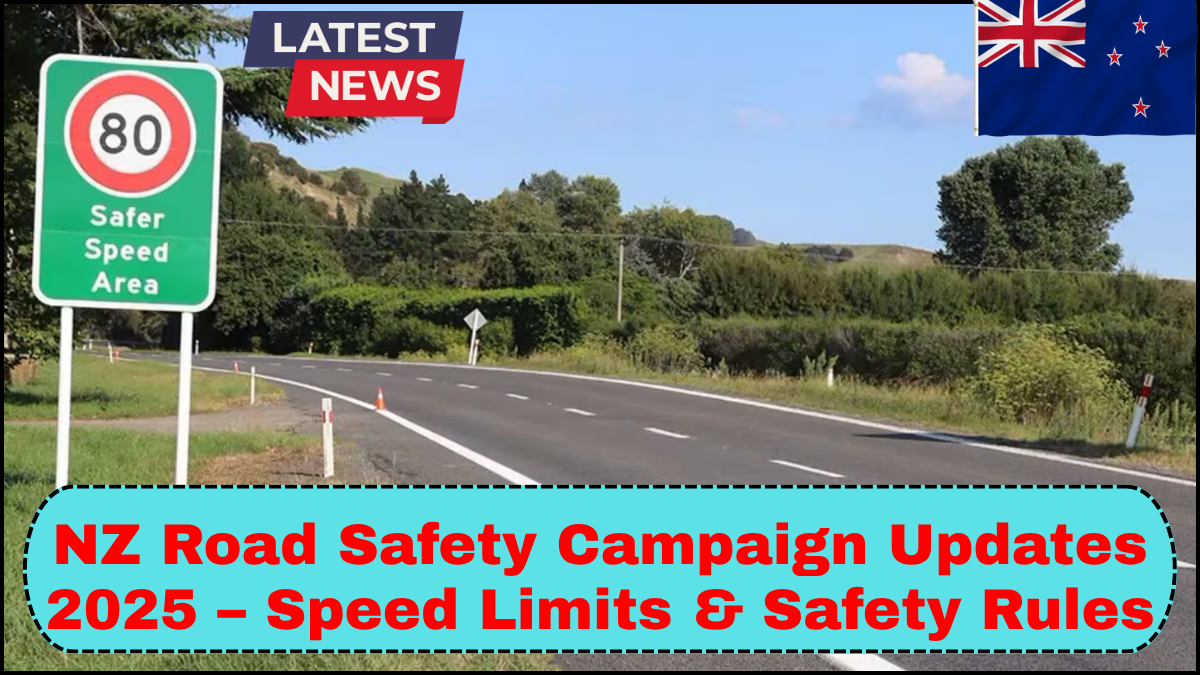New Zealand has taken a firm stance on enhancing road safety in 2025, with the government rolling out a series of critical changes under the NZ Road Safety Campaign Updates 2025. These updates focus heavily on stricter speed limits, revised safety protocols, and comprehensive road safety law changes aimed at achieving significant accident reduction in NZ.
Below, we break down the key components of this campaign, including new rules, enforcement strategies, and what drivers need to know moving forward.

Stricter Speed Limits Introduced Across High-Risk Zones
One of the most immediate and visible shifts in the NZ Road Safety Campaign 2025 is the adjustment of speed limits in accident-prone areas. After conducting a detailed analysis of high-risk zones across urban and rural networks, Waka Kotahi (NZ Transport Agency) has implemented new lower speed thresholds.
-
Urban areas: Speed limits in many residential zones have been reduced from 50 km/h to 30–40 km/h, particularly near schools, parks, and hospitals.
-
Rural roads: Some open roads now carry a revised limit of 80 km/h, down from the traditional 100 km/h, especially in regions with limited shoulder space or high crash statistics.
-
School zones: A blanket rule mandates a maximum speed of 30 km/h during school hours, enforced through automated cameras and random patrols.
These speed reductions aim to minimize the severity of crashes and allow drivers more time to react to hazards — a move supported by evidence from prior local and international studies.
Updated Road Safety Laws Take Effect
With road fatalities still a pressing concern, road safety law changes form a central pillar of the 2025 campaign. These reforms touch on several aspects of driving behavior and vehicle compliance:
-
Mandatory driver refresher courses for drivers over 75, as part of license renewals.
-
Zero-tolerance policy for mobile phone usage, with increased penalties and real-time detection cameras installed in urban corridors.
-
New seatbelt legislation requiring all passengers, including those in taxis and ride-shares, to wear seatbelts at all times.
-
Drug-driving enforcement gets sharper: roadside saliva testing kits are now in operation nationwide, with stiff penalties for offenders.
These rules aim to tighten compliance and create a more proactive safety culture among drivers and passengers alike.
Technology-Backed Enforcement and Monitoring
The 2025 campaign integrates advanced technology to enforce laws more efficiently and accurately:
-
Speed detection systems using AI-powered sensors are being deployed at strategic intersections and known black spots.
-
Real-time monitoring of driver behavior through connected dashcams is being incentivized, particularly for fleet operators.
-
Digital infringement notices will now be sent directly to a driver’s NZTA account, speeding up communication and reducing delays in enforcement.
These digital enhancements allow for faster response times and better tracking of repeat offenders.
Public Awareness & Education Campaigns
Enforcement is only one side of the safety equation. The campaign also includes a renewed focus on public awareness. Multiple nationwide campaigns have launched in 2025 to reshape driving behavior:
-
“Slow Down, Save Lives”: A campaign focused on educating the public on the human cost of speeding.
-
Interactive school programs teaching children road safety fundamentals, making them active participants in the safety dialogue.
-
Social media challenges and VR simulations to engage younger drivers and reinforce the risks of distracted or impaired driving.
By combining legislative changes with education, the NZ government aims for long-term behavioral shifts, not just short-term compliance.
Results and Targets for 2025
As part of the NZ Road Safety Campaign Updates 2025, the government has outlined clear benchmarks:
-
A 30% reduction in serious road accidents by the end of the year.
-
Zero fatalities in school zones, using stricter speed enforcement and infrastructure changes.
-
25% drop in DUI and drug-related accidents, tracked via updated roadside testing data.
Waka Kotahi will release quarterly performance reviews, ensuring transparency and course correction as needed.
FAQs: NZ Road Safety Campaign 2025
Q1: When do the new speed limits take effect?
Most of the new speed limits came into force as of April 1, 2025, with additional zones being added gradually through the year.
Q2: How will I know if I’m driving in a reduced-speed area?
All affected zones are clearly marked with updated signage, and many areas feature flashing electronic signs during school or high-risk hours.
Q3: What are the penalties for using a mobile phone while driving under the new rules?
First-time offenders face a $300 fine and 20 demerit points, with escalating penalties for repeat violations.
Q4: Are the new laws permanent or part of a trial?
While some measures are under review, most of the changes are intended to be permanent, especially those backed by strong safety data.
Q5: How can businesses prepare for these changes?
Fleet managers are encouraged to adopt dashcam systems, educate drivers on the updated laws, and monitor vehicle speeds using GPS.
click here to learn more